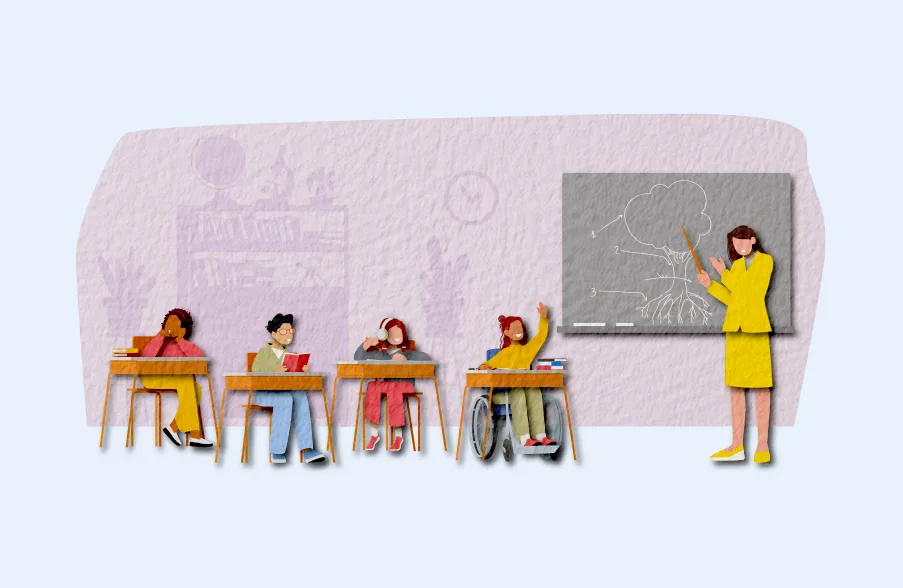
Published Nov 28, 2023
Tips for substitute teaching in special education classes
Estimated Reading Time: 4 minutes
Substitute teaching in special education classes comes with unique challenges and rewards. As a substitute teacher, you play a crucial role in maintaining a positive and inclusive learning environment for students with diverse needs. Whether you’re an experienced educator or new to the field, these tips will help you navigate the intricacies of substitute teaching in special education classes.
Many of these tips and ideas can be used regardless of what grade(s) you will be subbing for (i.e. elementary, middle, and high school). So let’s get started.
RELATED: Subbing in math classes | Subbing in English classes | Subbing in foreign language classes | Subbing in PE classes
There are many things that you can do even before students arrive to help you get started on the right path.
Give yourself plenty of time to prepare for the day. (In certain situations, the school may be able to give you the option to shadow the full-time teacher or meet up with them before the assignment begins. However, an unexpected teacher absence may not make this possible, and it’s especially important to arrive early in those situations.)
IEPs outline the specific needs and accommodations for each student with special needs. Take the time to review these documents before the class begins to understand the unique requirements of each student, such as when/if students have to take medication or any other medical conditions you need to be aware of (i.e. seizures, allergies, etc). This knowledge will help you provide targeted support and ensure a smoother day for everyone.
Collaborate with the regular classroom teacher, special education staff, and any support personnel. They can offer valuable insights into the classroom dynamics, individual student needs, and effective teaching strategies. Clear communication ensures a cohesive approach to meeting the diverse needs of the students.
Special education classes often thrive on routines. Establishing a clear and predictable schedule helps students feel secure and supported. Be consistent with transitions, activities, and expectations to create a structured learning environment.
Positive reinforcement goes a long way in special education. Identify and acknowledge positive behaviors to encourage a positive classroom culture. Understand the specific strategies that work well with the students you’re working with, and use them consistently.
Special education classes may require on-the-spot adjustments. Stay flexible and be prepared to adapt your teaching methods to accommodate different learning styles and abilities. Flexibility is key to creating an inclusive and supportive environment.
Foster a sense of belonging for all students. Encourage peer support and collaboration, and be mindful of creating activities that allow every student to participate at their own level. Celebrate diversity and promote an inclusive classroom where everyone feels valued.
Many students in special education classes may have sensory sensitivities. Be aware of the sensory needs of the students and make adjustments as necessary. Provide sensory breaks or alternatives for students who may become overwhelmed.
Visual aids such as schedules, charts, and diagrams can be powerful tools in special education classes. Use visual supports to enhance communication, clarify expectations, and reinforce learning objectives. Visuals can provide additional support for students with various learning styles.
Take the time to build positive relationships with the students. Learn their names, interests, and preferences. Establishing a connection helps create a comfortable and trusting learning environment, making it easier for students to engage and participate.
After the day is done, seek feedback from the regular classroom teacher and special education staff. Understanding what worked well and areas for improvement can enhance your effectiveness as a substitute teacher in special education classes.
Substitute teaching in special education classes is a fulfilling and impactful role. By being well-prepared, flexible, and fostering a positive and inclusive environment, you can make a significant difference in the lives of students with diverse needs. Embrace the opportunity to learn from each experience and continue to refine your skills as you contribute to the success of these exceptional learners.

Expert Insights & Guides
This unique list of free activities and resources will keep your students engaged and occupied if you finish early.